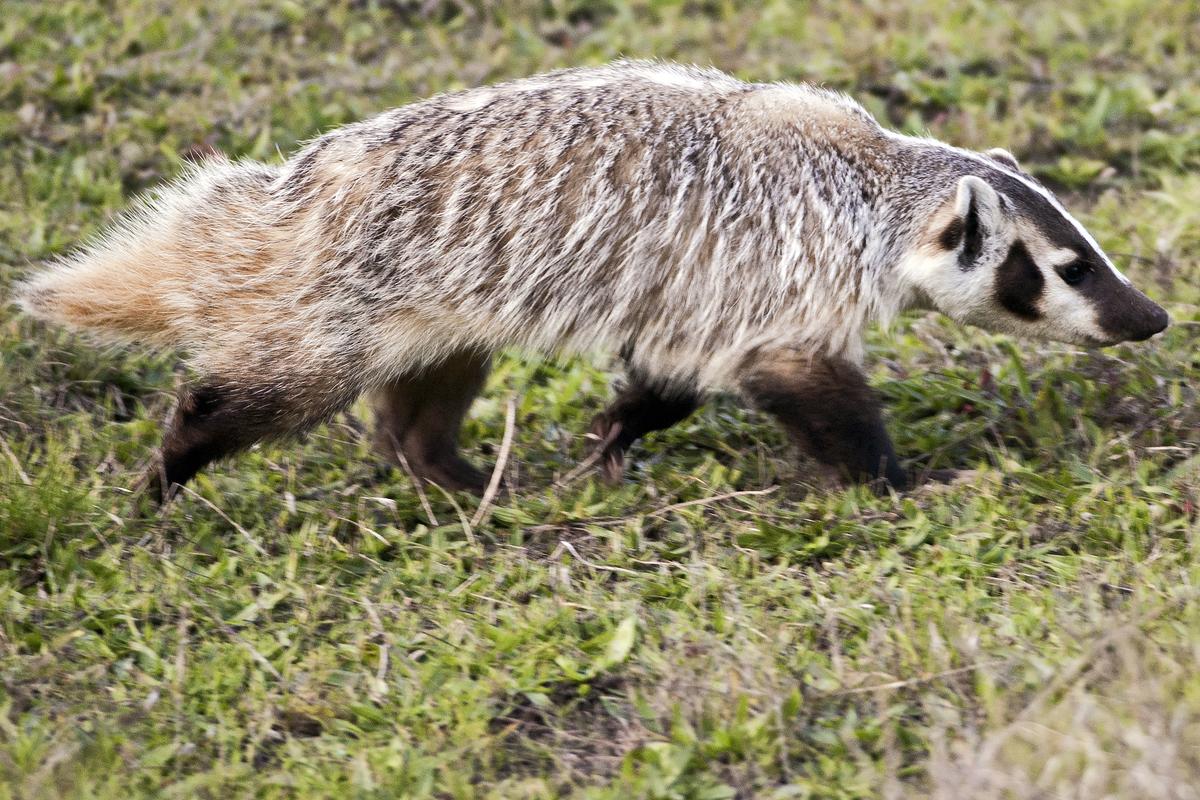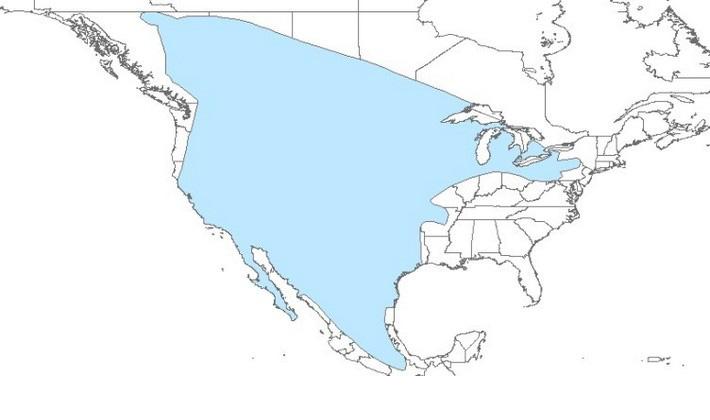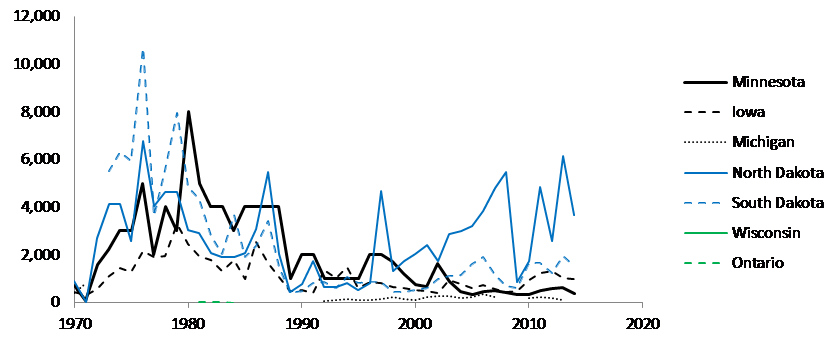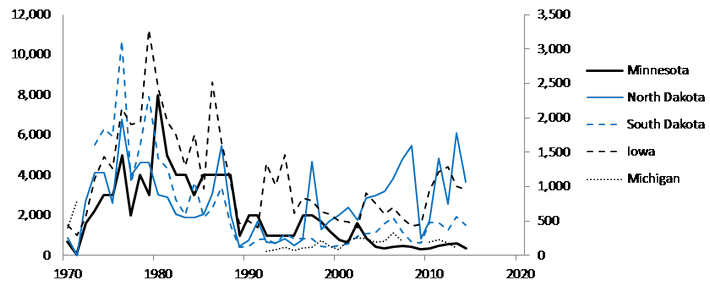
Description
Badgers are largely nocturnal, medium-sized carnivores in the weasel family (Mustelidae). Badgers are distinctive diggers with long claws on short, powerful legs. Badgers have distinctive facial markings: black patches interspersed with white lines, including a white line extending from the nose back over the head. Fur color ranges from greyish to yellow brown.
Size
Measurements for this species from several difference sources are listed below.
- Total length ranged from 27.6” to 31.5” (700-800 mm) in the Eastern United States. Male total length ranged from 28.5” to 33.9” (725-860 mm) in Minnesota, and female total length ranged from 28.0” to 30.7” (710-780 mm) in Minnesota.
- Tail length ranged from 4.7” to 6.1” (120-155 mm) in the Eastern United States. Male tail length ranged from 5.1” to 7.5” (130-190 mm) in Minnesota, and female tail length ranged from 4.3” to 6.2” (110-157 mm) in Minnesota.
- Body weight ranged from 15 lb to 25 lb (6.8-11.4 kg) in the Eastern United States. Male body weight ranged from 13.7 lb to 24.7 lb (6.2-11.2 kg) in Minnesota, and female body weight ranged from 11.7 lb to 20.1 lb (5.3-9.1 kg) in Minnesota.
- Males are significantly larger than females.
Distribution & Status
Badgers are found in largely treeless prairies, parklands, farmlands, and deserts. Badgers range from southern Canada through Great Lakes states, Great Plains states, Western states, south into central Mexico. Regionally, badgers are found throughout the Great Lakes states. Populations are regionally secure or apparently secure in U.S. Great Lakes states, and imperiled in Ontario.
Worldwide, Taxidea taxus is restricted to North America. Taxidea taxus is the sole representative of the Taxidea genus, and the only badger found in the New World. Badgers are found throughout Europe, Asia, and Africa.
Badgers have an IUCN rank of Least Concern, IUCN information.
Incidence in Minnesota
Trapping for badgers, raccoons, foxes, and opossums are jointly administered in Minnesota, typically allowed during a period from fall through winter. In 2017-18, open season will be from October 14th through March 15th. Hunting and trapping are regulated by the Minnesota Department of Natural Resources, regulations.
Population Trends
To help assess population trends, we can look at regional furbearer harvest data, methods.
Regional harvest was highest in the 1970s and 1980s. In more recent years there are spikes in harvest, but no clear trends.
North Dakota, South Dakota, Minnesota make the largest contribution to regional harvest, with smaller contributions from Iowa and Michigan. Relatively few badgers are harvested from Ontario and Wisconsin.
Life History
Badgers are specialized to dig out or ambush prey, particularly ground squirrels and pocket gophers. Badger diet also includes other small mammals, invertebrates, reptiles, amphibians, and small birds. Badgers dig their own burrows, and enlarge burrows from other mammals. Burrows generally have a single, elliptical entrance, may extend over 26 feet (8 meters), and may be over 6 feet (2 meters) underground. During cold winter days, badgers spend more time in their dens. Badgers are found in largely treeless habitat in prairies, farmland, and deserts. Badgers are sexually mature at 1 year and mate in late summer, but zygote implantation doesn’t occur until February or March. In March or April 3-4 cubs are born in special natal dens, dens that typically have more branches than other dens to ease movement of multiple individuals. Young don’t emerge from burrows until 4-5 weeks of age, and disperse in late summer. Larger mammal carnivores occasionally take badgers, but automobiles, poisoning, trapping, and other human activities can be a more major cause of mortality for some populations.
Contacts with Humans
Badgers provide an economic benefit by controlling populations of ground squirrels, pocket gophers, and other small mammals. Rarely, badgers will raid hen houses or attack beehives. Farmers can view badgers as pests because of problems with irrigation and injuries to livestock caused by badger burrows. Badger fur is not economically important for trappers.


